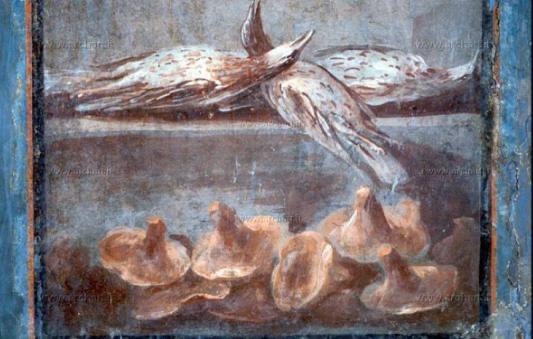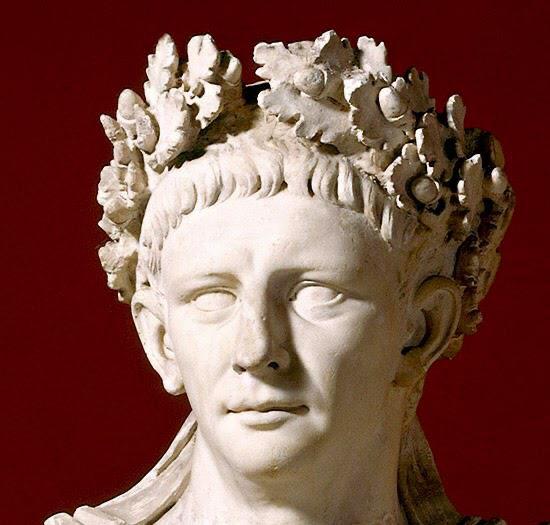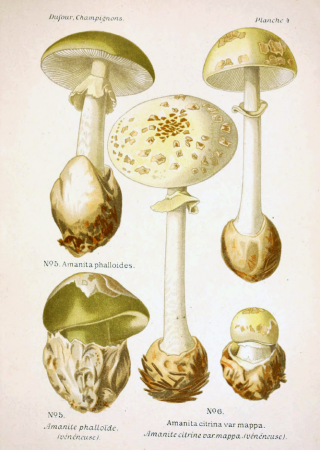Preface 2023
Preface – magazine 2023 A contemporary magazine feeds upon dynamism and vigour. It instantly perceives the inputs deriving from the readers and evolves, offering its best at...
Preface – magazine 2023 A contemporary magazine feeds upon dynamism and vigour. It instantly perceives the inputs deriving from the readers and evolves, offering its best at...
“Autumn. We already heard it coming / in the August wind, / in the September rains / torrential and weeping…”, this is how Vincenzo Cardarelli sang this...
“Let him bring huge lampreys or enormous salmons or pike, without letting it be known. A good eel is hardly bad, shad or tench or some good sturgeon, cakes or stuffed...
The use of national cuisine and typical local products has always been a powerful tool of cultural diplomacy to improve the country’s image and increase its influence and...
“He possessed great talent at painting flowers and figures”. It seems an obvious statement for our times, but the famous phrase, attributed to Caravaggio, overturned...
CLIMBING THE SKY IN HEALTH The great humanist philosopher Marsilio Ficino, whose Academy ennobled Florentine culture in the Laurentian era, had a special relationship with food....
We have spent the quarantine with our hands in the dough and we know more about yeast and flour. We now want to take a small trip to discover the “good smell” in...
In early June, more than 2300 years will have passed since the death of Alexander the Great; in fact, the Macedonian king died in 323 B.C., at 32, after a very short illness. The...
At the port of Livorno, no one had noticed the rustling of that bulky cloak. Blessed by the most desiring stars, the curved shape of Settimontano Squilla was embarking on a...
Interview with Dr Enrico Chiavacci, Marketing Director at Marchesi Antinori. In the time of Covid-19. A distanced interview with Dr Enrico Chiavacci, Marketing Director at...
An encounter with the agronomist Sonia Donati The clear blue sky, the approaching spring light and the vision of Florence from the rooftop bar where we meet: it all looks like a...
“Autumn. We already heard it coming / in the August wind, / in the September rains / torrential and weeping…”, this is how Vincenzo Cardarelli sang this extraordinary season, which offers to our eyes landscapes of warm and velvety colours and delights our palate with excellent foods.
Here are the grape and the new wine (how can we forget the superb Beaujolais Nouveau?), the new olive oil with its sour taste that we Tuscans like so much; quinces, persimmons, white truffles, and other delicious produce. However, we must not forget the mushrooms Italians appreciate very much in their dishes, sometimes at their own risk.
The Egyptians already knew them and even the Greeks, who called them myketos, while the Latin word fungus comes close to the Greek spongos or sphongos, which indicates the sponge instead. The Greek philosopher Theophrastus (IV-III century) spoke of mushrooms. In Historia Plantarum, he considered them imperfect plants because they had no roots, leaves and flowers, and he was the first to divide them into four categories.
The Greeks and specifically the Athenians enjoyed them at the table. We know that the father of the tragic poet Euripides, Mnesarchos, died together with his wife in 450 BC after eating amanitas by accident. Even the Romans knew them and were greedy for them. Men of science such as Pliny the Elder in the Naturalis Historia and the Greek physicians Dioscorides (1st century) and Galen (2nd century) studied them.
The Roman gourmets appreciated mushrooms. Thus we find them in numerous recipes of the De re coquinaria (On the Subject of Cooking) by Apicius, in the Satires by Horace (II, iv 30-31), in The Banquet of Trimalchio, in some epigrams by Martial (e.g. 1.20), etc.

The story of Emperor Claudius (41-54 AD), the successor of Caligula and penultimate ruler of the Julius-Claudian dynasty, offers a tragic model of the utilization of mushrooms in Roman cuisine and their toxicity. Claudius was a refined man and wrote a treatise on the Etruscans, unfortunately lost; anything but foolish, and he proved to be a great and wise ruler.
However, his contemporaries mocked him for the numerous betrayals of his four wives. The Latin poet Juvenal in the VI Satire railed against the empress Messalina, the third wife of the princeps, for her nymphomania that led her to prostitute herself undercover in brothels, even with gladiators and sailors. They also mocked Claudius for his physical appearance: he was lame and stuttered.
He was a victim of women, so much so that his last wife, the noble Agrippina, a descendant of Augustus, daughter of Germanicus and sister of Caligula, poisoned him with a plate of mushrooms. Probably she used the Amanita phalloides or the Amanita muscaria, which Claudio enjoyed eating very much.
Suetonius and Tacitus narrated the story and added details, such as that Agrippina would have availed herself of the help of a professional poisoner, Lucusta, who also provided her with poison to add to the mushrooms, to be surer of the deadly result (Tacitus, Annals, XII, 66/67).
The very ambitious Agrippina wanted to liquidate Claudio to accelerate the access to the throne of her son Nero, who the princeps had already made his son. She was eager to manage the succession herself as soon as possible, given that Nero was only 17 years old. The unfortunate Claudio died in great suffering on 13 October 54 CE.

People mocked him even after death. Seneca, who hid a lasting grudge against him for being exiled in the past, dedicated him a famous work, the Apokolokintosis Divi Claudii. It translates as the sugar-coating of the Divine Claudius (as to say the divinization of a pumpkin), in which, among other things, Seneca ferociously mocked the emperor. The philosopher ridiculed him even at the point of death: Cum maiorem sonitum emisisset illa parte qua facilus loquebatur: ‘Vae me, puto, concacavi me’ [1].
That ill-fated murder deprived the empire of a cultured and wise princeps. It backed the rise of a cruel tyrant, Nero. Loved by the people but execrated by pro-senatorial and Christian historiography.
In 1976, the Florentine doctor and writer, and the holder of the University’s Toxicology chair, Prof Pier Francesco Mannaioni published an article in Archives of Toxicology, with his collaborators. Here, he showed Penicillin G as a remedy for poisonings by Amanita phalloides.

If known earlier, this therapy could have prevented famous deaths, such as Pope Clement VII and the Florentine Giulio De’ Medici deaths. And above all those of numerous unprepared mushroom hunters.
ANNA CAFISSI
[1] When he had made a great noise with that end of him which talked easiest, he cried out, “Oh dear, oh dear! I think I have made a mess of myself.” I cannot say whether he did or not, but, certainly, he always did make a mess of everything.